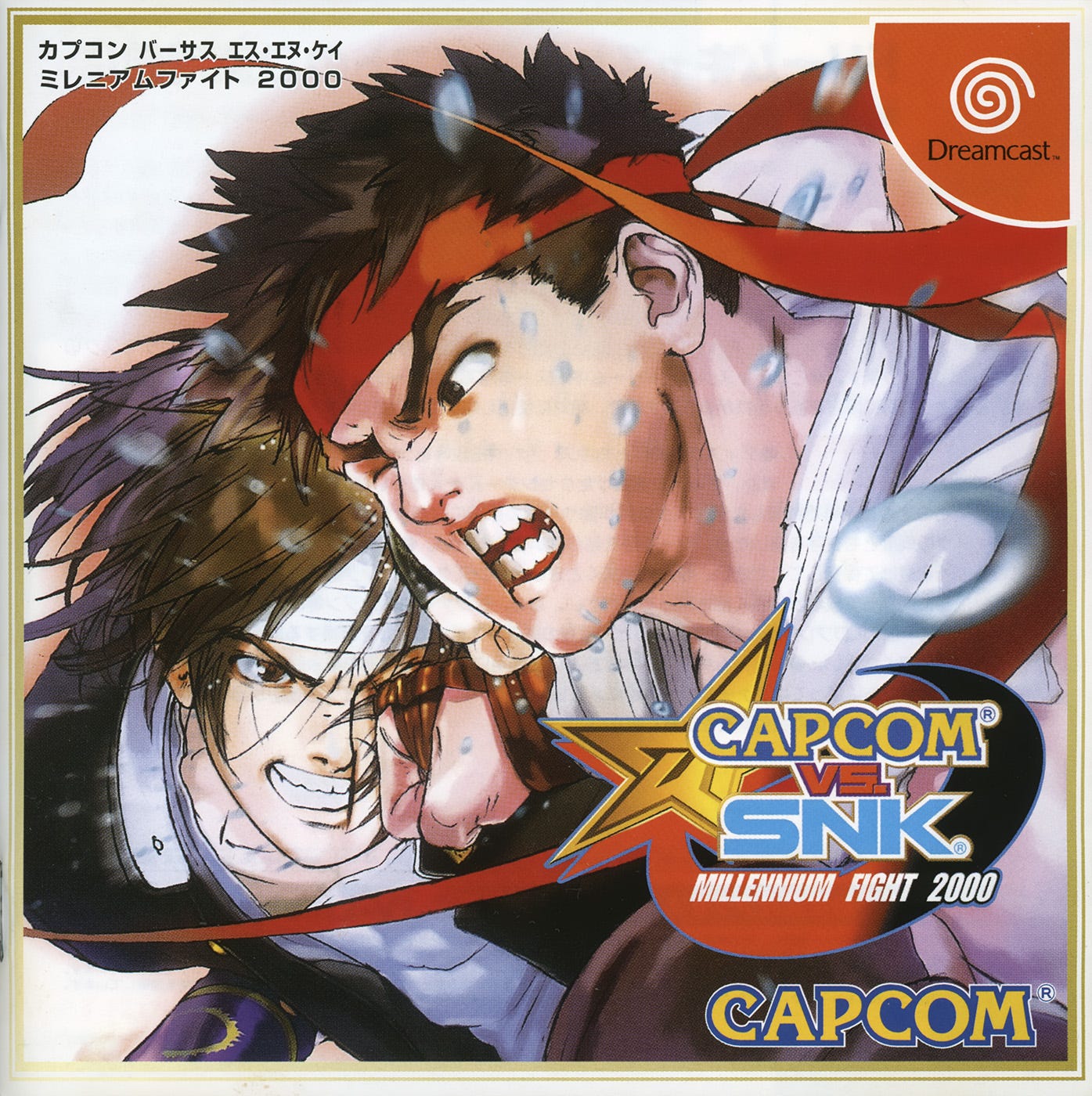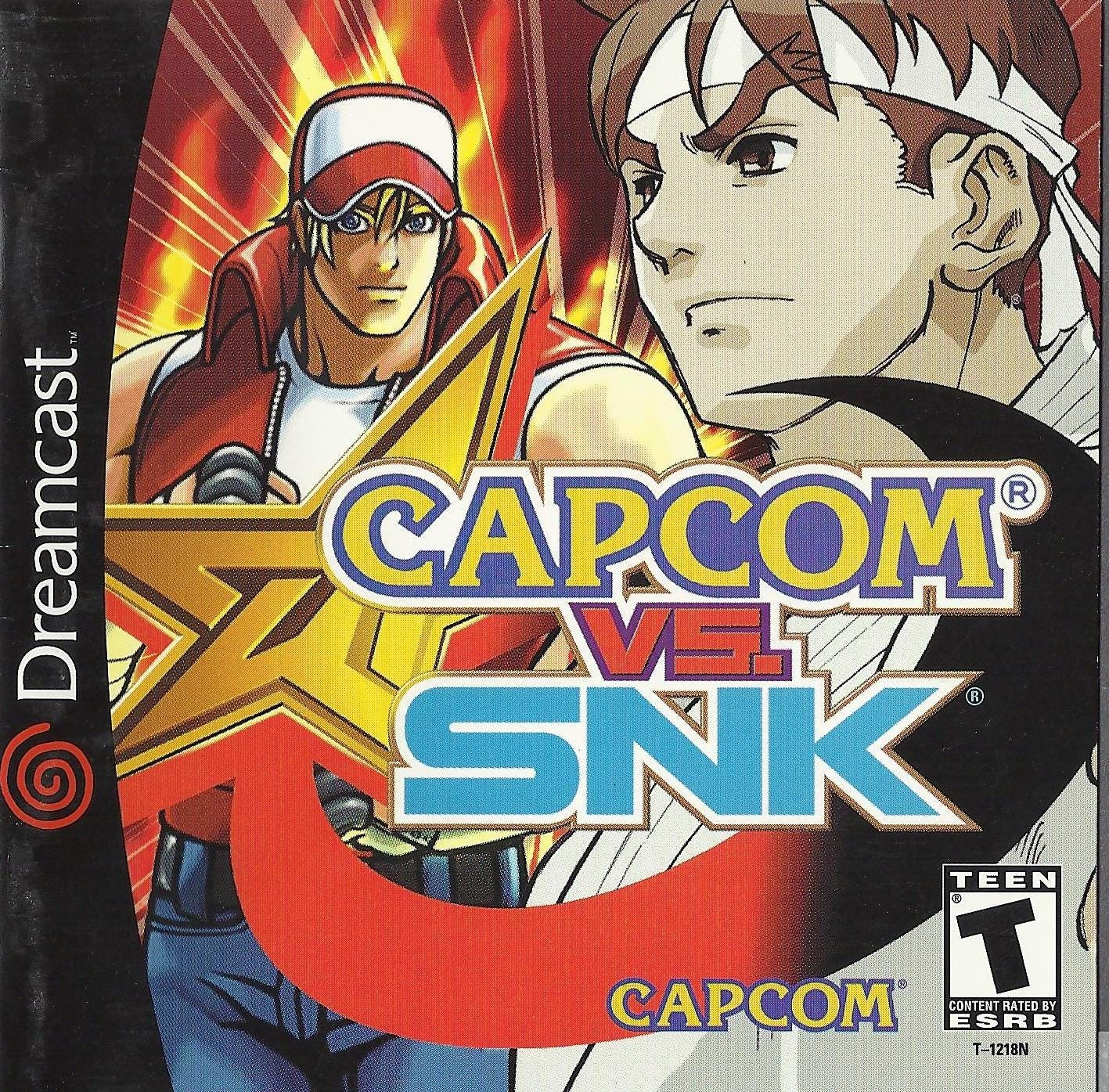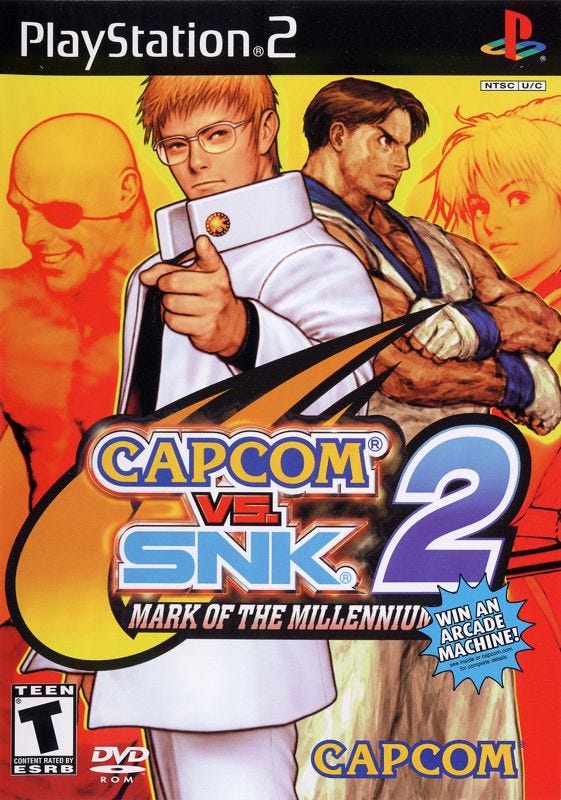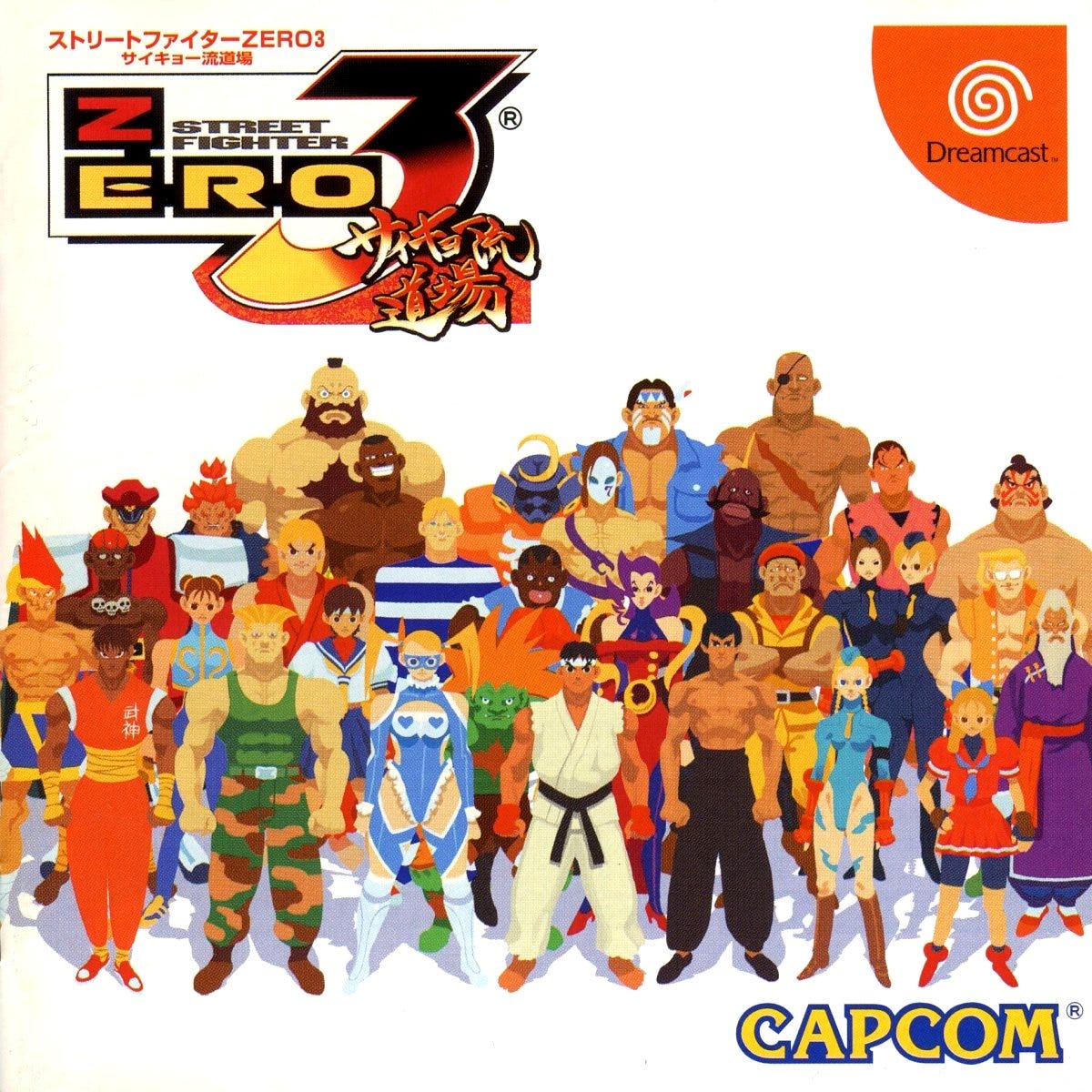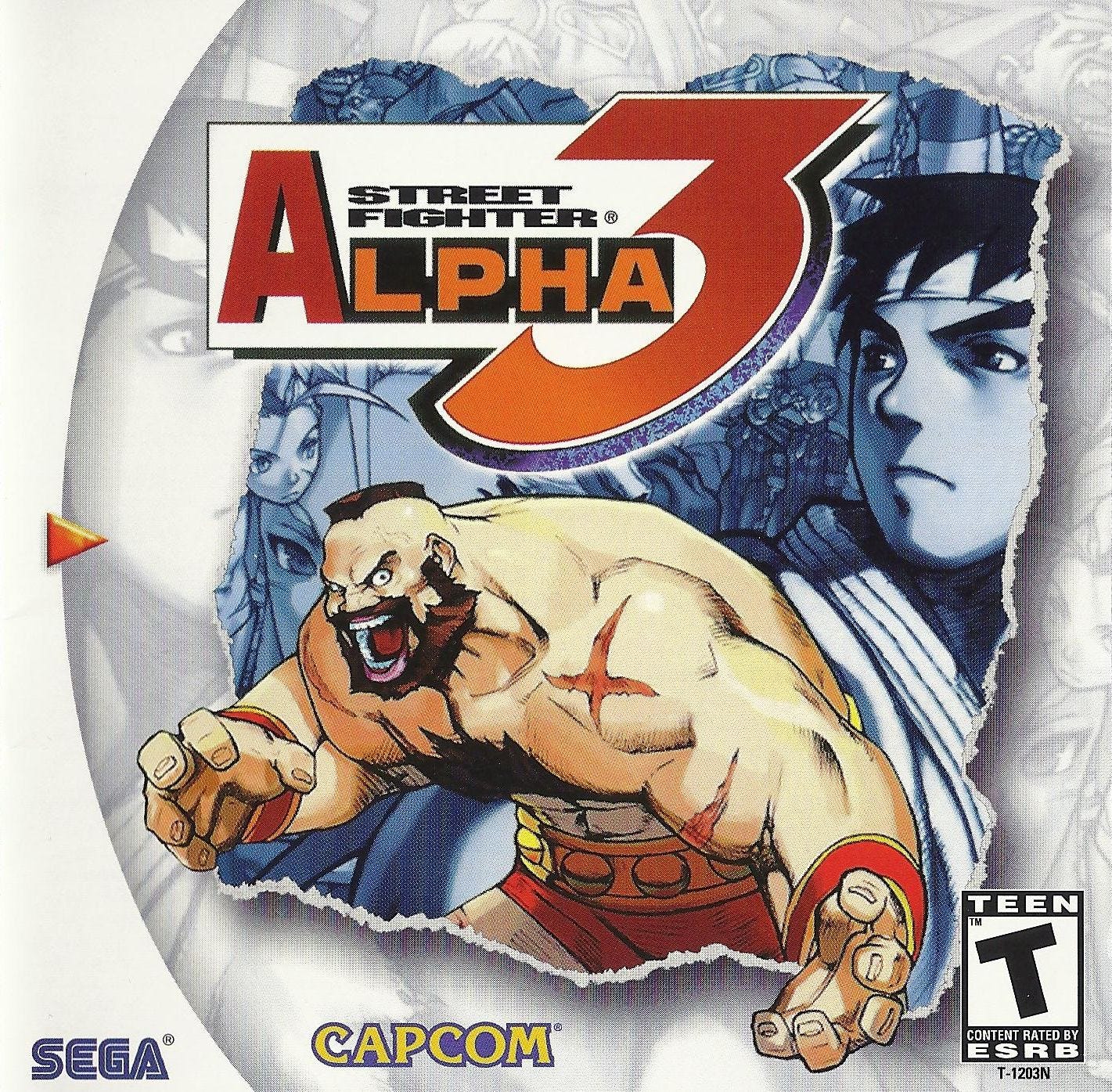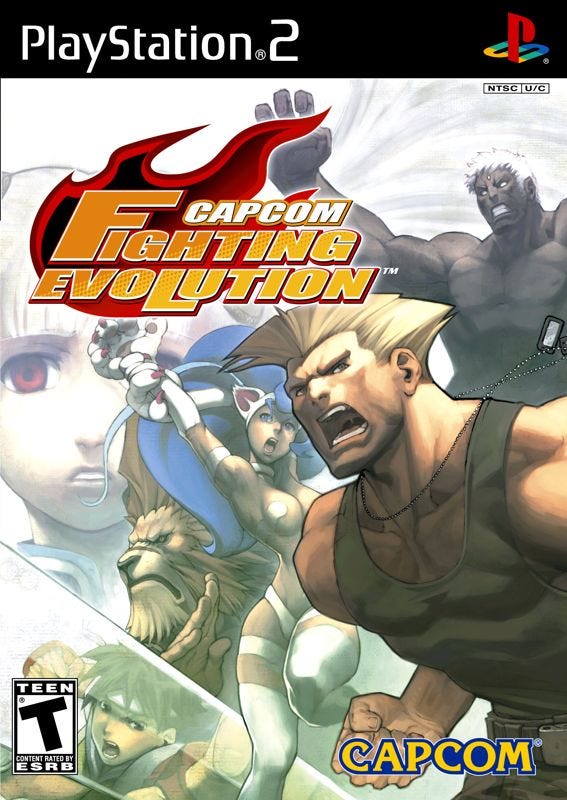Capcom Fighters #03: Capcom vs. SNK, Capcom vs. SNK 2, Street Fighter Alpha 3, and Capcom Fighting Evolution
The third batch of the Capcom fighters series
Here’s the third batch of the Capcom fighters on Substack, like the previous two, it’s four games in one Substack post, and unlike the second batch, they’re not all Dreamcast after Capcom decided to call it quits on the console. Like the previous batch, all of them will be included in Capcom Fighting Collection 2.
The first order of business is — that’s right — Capcom vs. SNK (aka Capcom vs. SNK: Millennium Fight 2000)! The character art was done by Kinu Nishimura and Toshiaki “Shinkiro” Mori (as they would later reprise their positions in the second game, which will be reviewed later on). I never grew up with any games made by SNK (except for Metal Slug), but my older half-brother — who is in the U.S. Army — owned the game. Yuri Sakazaki, Sakura Kasugano, and Terry Bogard wear red Converse sneakers. In the newer KOF games, Yuri Sakazaki’s red Converse sneakers were replaced with Vans SK8-Hi-inspired sneakers, possibly due to the fear of legal actions against Nike, and Ai Kakuma took over the voice role of the character, replacing Kaori Horie from Art of Fighting 2. Capcom vs. SNK uses a “ratio” system, where the “ratio” is a rating of a character's overall strength, ranging from 1 to 4. Teams of up to four can be assembled, but their combined ratios must equal and go no higher than 4. The gameplay uses the SNK-style four-button format. The player can also choose their “groove”, or attack meter. The SNK Groove is based on the Extra mode that was used from The King of Fighters '94 to The King of Fighters '98, while the Capcom Groove is based on the gameplay system from the Street Fighter Alpha series.
Capcom vs. SNK 2: Mark of the Millennium 2001 — aka Capcom vs. SNK 2: Millionaire Fighting 2001 in Japan — was released in 2001, initially released on NAOMI hardware in arcades, with Sega handling the American arcade release before it was ported to the Dreamcast (Japan only), PlayStation 2, GameCube, and the original Xbox. The original SNK was forced to close in 2001 due to financial troubles before being renamed Playmore Corporation. In 2003, Playmore Corporation was renamed SNK Playmore Corporation before SNK dropped “Playmore” from its name in 2016.
Street Fighter Alpha 3, also known as Street Fighter Zero 3 in Japan, Asia, South America, and Oceania, was released in 1998 for the arcades before being ported to the Sony PlayStation and Sega Dreamcast between 1999 and 2000. The game marks the debut of R. Mika (Rainbow Mika), a Japanese pro wrestler who idolizes Zangief, Karin Kanzaki, Sakura’s rival who was first introduced in the Street Fighter manga Sakura Ganbaru! by Masahiko Nakahira (and also predates Tekken’s own Emilie “Lili” de Rochefort); Cody from Final Fight, who has since become an escaped convict (where we last seen him in Final Fight Revenge); and Juli and Juni, two of Shadaloo’s “Dolls” who serve as Vega/Bison’s assassins and guards and who are unlockable characters. Did I own this game back in the day? Nooooooo! But I did burn it for the Sega Dreamcast before many ROM sites that held Dreamcast games were shuttered in 2018.
Capcom Fighting Evolution, also known as Capcom Fighting Jam in Japan and Europe, was released in 2004. It was originally released as a coin-operated arcade game for the Namco System 246 hardware and ported to the PlayStation 2 and Xbox. The game includes characters from Red Earth (known as Warzard in Japan), which have a Gem gauge that allows the player to stock up to two gems after the gauge fills up, and characters from Darkstalkers (known as Vampire in Japan), have a three-level “Special Stock” gauge like in Night Warriors: Darkstalkers Revenge, allowing them to perform ES Moves (enhanced versions of their regular special moves) or EX Specials (their super moves). Ingrid is the only new character featured in the game, although she was one of the new characters intended to debut in the unreleased 3D fighting game Capcom Fighting All-Stars.
I’ll see you in the fourth batch of the Capcom fighters. Please remember: the special moves in these fighting games performed by the characters are extremely dangerous and should never be attempted by anyone in real life.



